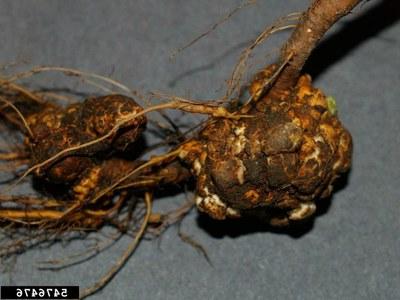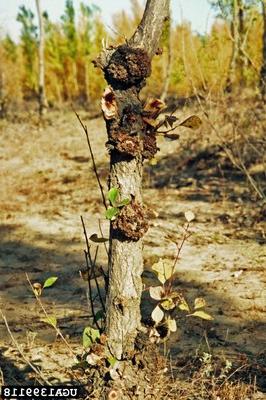Diagnosing Apple Tree Crown Gall
Agrobacterium tumefaciens
Symptoms
- Crown gall is caused by a soil-borne bacterium that enters tree wounds caused by mower damage, pruning, frost cracks, insects or planting damage.
- The bacteria stimulate the tree to produce plant hormones that cause a tumor or gall to form.
- The galls most commonly occur on the roots or on the trunk near the soil line.
- At first, the galls appear light-colored and spongy.
- As the galls mature, they turn dark brown and woody.


Management and other important facts
- No cure exists for the disease, and it may kill a young apple tree by girdling the stem.
- A mature apple tree may be able to tolerate crown gall.
- Carefully inspect apple trees to avoid purchasing a tree infected with crown gall.
- If a recently planted tree develops crown gall, remove the tree and adjacent soil; the bacteria can persist for several years in the soil.
- If your property has a history of crown gall infections, avoid planting fruit trees or other susceptible plants.
Author: Esther McGinnis
This website was supported by the U.S. Department of Agriculture’s (USDA) Agricultural Marketing Service through grant 14-SCBGP-ND-0038.
Its contents are solely the responsibility of the authors and do not necessarily represent the official views of the USDA.